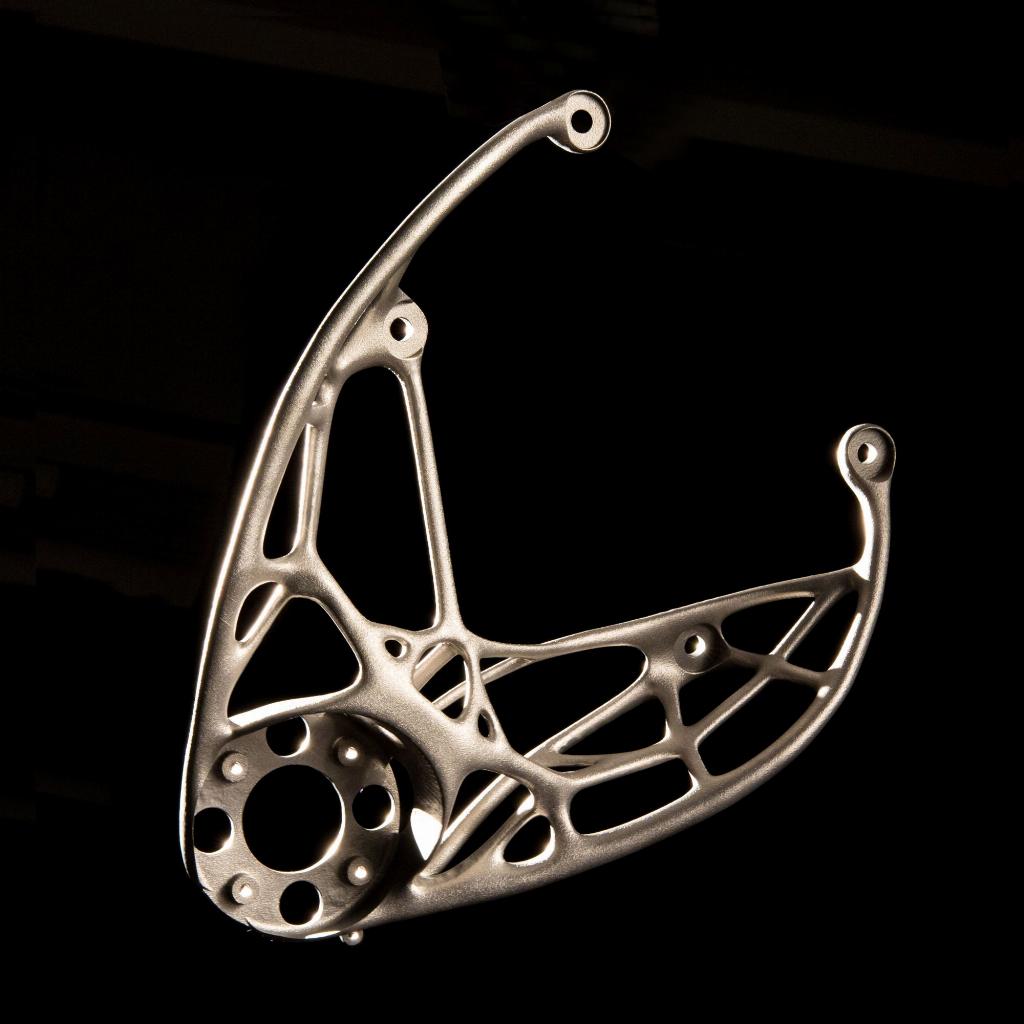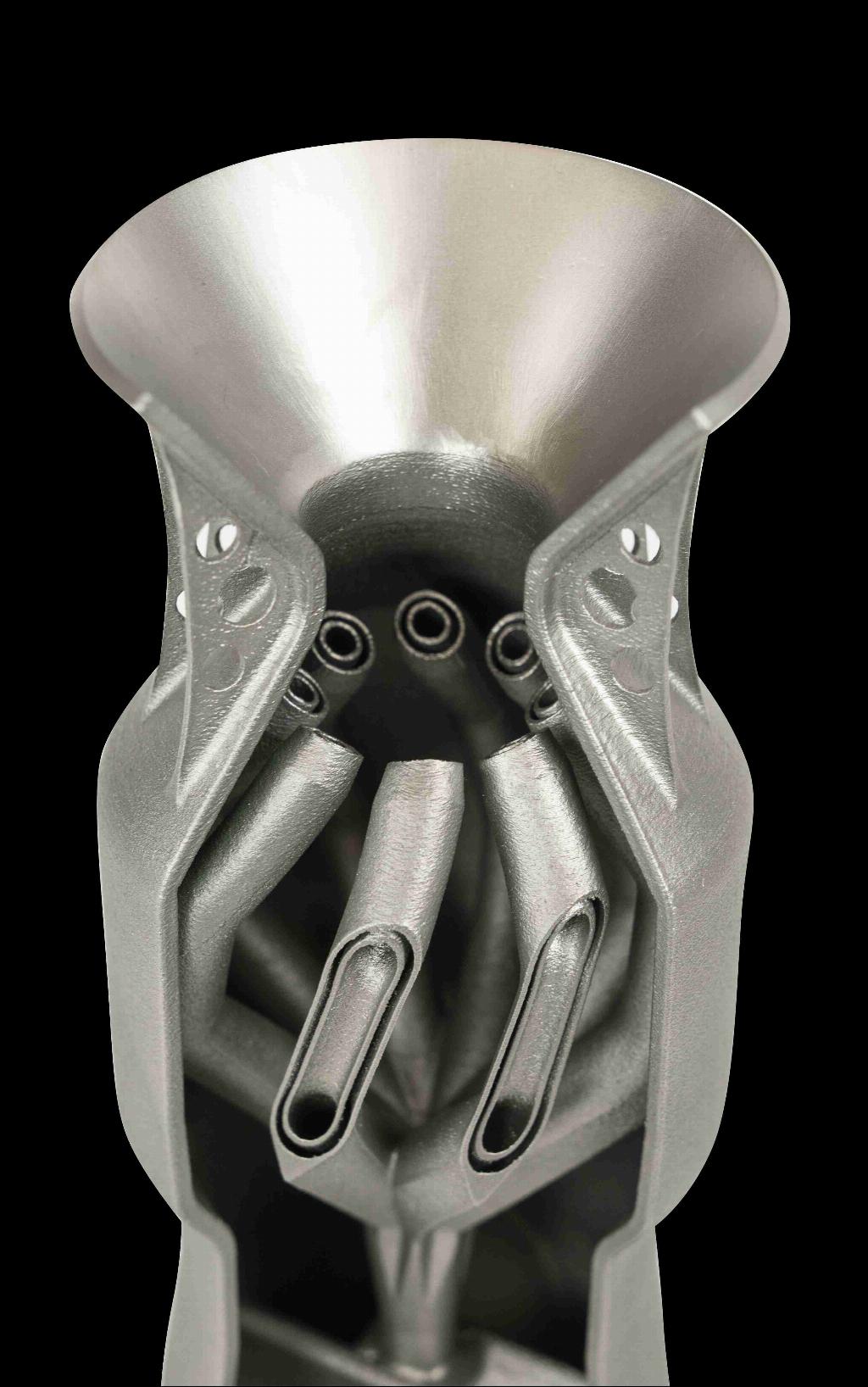AM makes the top flight

Patrick Dunne, vice-president, advanced applications development, 3D Systems explains how aerospace applications are taking flight with additive manufacturing.
It’s been more than 30 years since Chuck Hull created the first 3D printer and launched an industry. What started as a technology for rapid prototyping is now transitioning into a full-fledged method for production – flourishing into a $6 billion market.
Additive Manufacturing (AM) has demonstrated advantages to a variety of manufacturers including: part count reduction, design optimisation, lightweighting, thermal optimisation as well as enabling direct production without the need for tooling. One of 3D printing’s biggest advantages, however, continues to be rapid prototyping, helping to accelerate the product development cycle. To remain competitive, manufacturers continue to use 3D printing for this purpose to accelerate product design and production processes – enabling better products and improving time-to-market.

Aerospace and defence manufacturers were the first to embrace the technology as a function of the novel capabilities it enables, however, like medical and other risk adverse industries, aerospace and defence workflows are highly regulated. To fully integrate additive manufacturing into their environments, aerospace and defence manufacturers must not only redesign their parts and workflows, but re-certify their processes. Transitioning to a digital workflow requires deep knowledge and expertise to pave the way through the process, achieving certification in the shortest amount of time to avoid slowing – or halting – operations. Alongside this deep expertise, the technology itself is evolving such as new plastic and metal materials and faster 3D printing technologies that are resulting in digital factories enabling more efficient process qualification.
Many aerospace and defence manufacturers are transitioning from prototyping to production applications. Those who are on this journey recognise that there is the potential for AM to represent a lower-risk manufacturing approach than analogue technologies. For example, let’s say a manufacturer wants to produce a bracket or a fuel nozzle. These parts are designed digitally, with every voxel being formed in a controlled way from digital data. When that part is produced, it’s done from that digital file, using a very precise laser, in a controlled environment. As the technology continues to mature, additional advances are being made including the ability to control inputs such laser energy delivered while simultaneously analysing and controlling at high frequency the quality of alloy being generated. These digital technologies combined with standard post-manufacture quality control processes facilitate an expansion of risk mitigation capabilities.
Delivering on the promise
Over the last five years, the space industry has critically advanced qualification of structural metal components using additive manufacturing processes to reduce weight, reduce size, and maintain tensile strength of parts. Thales Alenia Space redesigned an existing bracket in 2016 for geostationary telecommunications satellites. Collaboration between Thales Alenia Space’s product owners and 3D Systems’ application engineers resulted in a cost-effective manufacturing and validation strategy. Since 2016, almost 20 unique brackets, which all have slightly different interface locations to accommodate customised satellites have been manufactured, including CNC post-machining. Design improvements included topology optimisation, which could improve stiffness versus mass rate. The resulting titanium-printed part was reduced in weight by 25%. In addition, production costs have been considerably improved and production time reduced by more than 50%.

We can also look at how Metro Aerospace is realising the benefits of AM in their workflow. This Dallas, Texas-based company relies on additive manufacturing solutions to rapidly prototype, qualify, and then produce production parts called ‘Microvanes.’ Microvanes are designed from a drag-reduction and performance-enhancement technology developed and patented by Lockheed Martin, and commercialised by Metro Aerospace. Developed initially for the C-130/L-100 aircraft, Microvanes are adhesively fastened on both sides of the aircraft’s fuselage and reduce drag by reshaping airflow around the aft cargo door, saving fuel at a rate of 25-30 gallons per hour while also significantly reducing carbon emissions and engine wear.
Metro Aerospace used Selective Laser Sintering (SLS) to prototype and manufacture Microvanes, followed by the full manufacturing process from completion of first article inspection reports for qualification, to material and product strength test, to final finishing and delivery of the production parts. The C-130 Microvanes are delivered in sets of 20 and each vane is slightly different in size and shape, which in traditional manufacturing would have required 20 different sets of tools. Instead, the 3D CAD data is arranged into a virtual build space for batch printing on the SLS platforms and takes just a few hours. Post-processing is minimal and after a 3D inspection report, the kits are sent to the customer.
Fuelled by digital production
It’s remarkable to look back at our recent history and see what AM has helped manufacturers achieve. We should all bear in mind, however, that just because AM is an available technology it is not a requirement for every manufacturer to adopt it. Additive manufacturing allows manufacturers to design without constraints, developing parts that would not be achievable with traditional technologies. Before beginning the design, it’s important to understand the part or application you are trying to achieve or address. For example, if you want to inject rocket fuel into a chamber, we need to ask ‘what is the perfect geometry to maximise the efficiency of this operation?’ and ‘what configuration yields maximum performance?’ From there, we can then calculate the optimal design. The result – in terms of performance – will be far superior to anything being made with traditional methods.
Over the past 30 years, rapid prototyping and additive manufacturing have transformed the way products are designed and made. AM enables customers to design and manufacture better products faster – and ultimately realise significant levels of product optimisation. Today, the transformation continues to be fuelled by a variety of solution providers that are introducing new materials and 3D printing technologies to address a broad set of applications. Whether for direct digital part production, or indirect such as the creation of 3D printed sacrificial patterns for casting in traditional alloys to produce large parts (e.g. parts 2m or longer), aerospace and defence manufacturers are rethinking how they address their application challenges. They are designing and producing parts never before possible, and bringing their innovations to market at an unparalleled pace. Additive manufacturing is a revolutionary method of production that will continue to enable novel step changes in product performance and optimisation well into the future.











